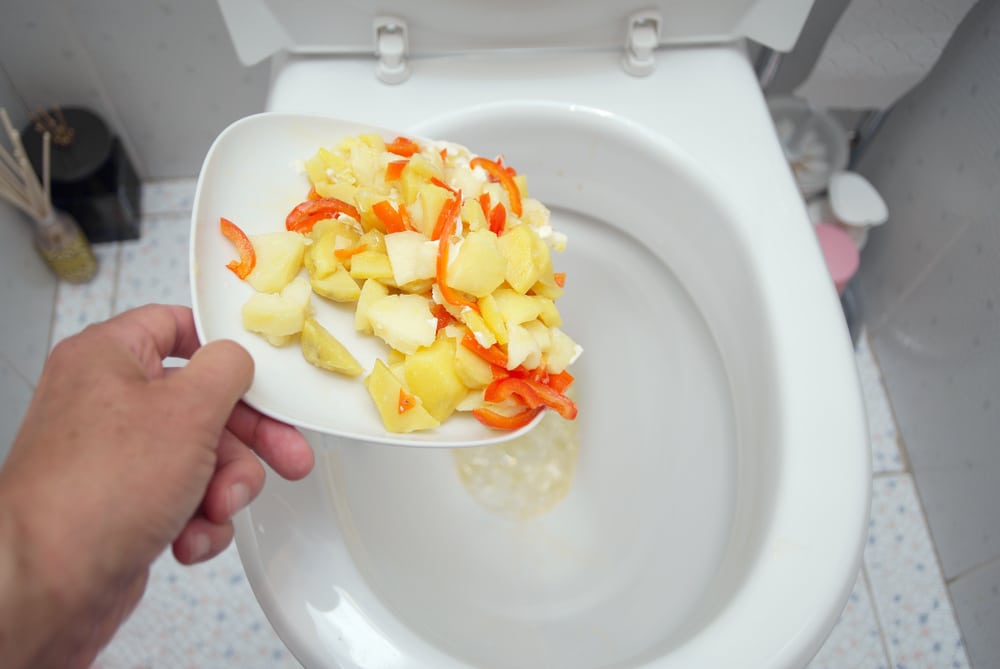Can One to Dispose of Food in the Toilet?
Can One to Dispose of Food in the Toilet?
Blog Article
We have found this post relating to Is it safe to flush food (especially rice) down the toilet? directly below on the internet and thought it made perfect sense to relate it with you on this site.

Intro
Lots of people are often faced with the issue of what to do with food waste, specifically when it comes to leftovers or scraps. One common inquiry that occurs is whether it's alright to purge food down the commode. In this post, we'll explore the reasons that individuals could think about purging food, the effects of doing so, and alternative techniques for correct disposal.
Reasons people may consider purging food
Absence of understanding
Some people might not know the prospective injury brought on by purging food down the bathroom. They might wrongly believe that it's a harmless method.
Comfort
Flushing food down the commode might appear like a quick and very easy option to getting rid of undesirable scraps, especially when there's no nearby garbage can available.
Laziness
Sometimes, individuals may merely pick to flush food out of large laziness, without taking into consideration the effects of their activities.
Consequences of flushing food down the commode
Ecological effect
Food waste that winds up in rivers can contribute to pollution and harm water ecological communities. Additionally, the water used to purge food can stress water sources.
Pipes problems
Purging food can bring about clogged pipelines and drains pipes, triggering pricey pipes fixings and inconveniences.
Sorts of food that need to not be flushed
Coarse foods
Foods with fibrous structures such as celery or corn husks can obtain tangled in pipes and trigger blockages.
Starchy foods
Starchy foods like pasta and rice can soak up water and swell, causing clogs in pipes.
Oils and fats
Greasy foods like bacon or food preparation oils ought to never be purged down the commode as they can strengthen and trigger blockages.
Appropriate disposal techniques for food waste
Using a waste disposal unit
For homes equipped with waste disposal unit, food scraps can be ground up and purged with the pipes system. However, not all foods are suitable for disposal in this manner.
Recycling
Certain food packaging products can be reused, minimizing waste and decreasing ecological impact.
Composting
Composting is an environment-friendly method to deal with food waste. Organic products can be composted and made use of to enhance dirt for horticulture.
The value of proper waste administration
Decreasing ecological damage
Appropriate waste administration practices, such as composting and recycling, aid reduce contamination and protect natural deposits for future generations.
Shielding plumbing systems
By staying clear of the technique of flushing food down the toilet, house owners can stop pricey plumbing fixings and keep the honesty of their pipes systems.
Final thought
In conclusion, while it might be appealing to purge food down the commode for convenience, it is very important to understand the prospective effects of this action. By taking on correct waste management techniques and dealing with food waste sensibly, people can add to much healthier plumbing systems and a cleaner environment for all.
FLUSH FOOD DOWN THE TOILET?
FLUSHING FOOD CAN CAUSE BLOCKED DRAINS IN YOUR HOME
All of the plumbing fixtures in your home are connected to the same sewer pipe outside of your home. This outdoor sewer pipe is responsible for transporting all the wastewater from your home to the Council sewer mains. Even small pieces of food that go down the kitchen sink can cause problems for your sewer. It should therefore be obvious that flushing larger bits of food, such as meat, risks a clog in either the toilet itself or the sewer pipes. Flushing greasy food is even more problematic because oil coagulates when it cools, coating the interior lining of your pipes.
THE TOILET IS NOT A BIN
Food isn’t the only thing that people shouldn’t be flushing down the toilet. People use the toilet to dispose of all kinds of things such as tampons, makeup wipes, dental floss, kitty litter and even underwear. Water goes to great lengths to educate residents about the high costs and stress placed on wastewater treatment systems simply from people flushing the wrong stuff down the toilet. It costs taxpayers millions of dollars each year, and homeowners thousands in blocked drain repairs.
FLUSHING FOOD IS A WASTE OF WATER
Flushing food is a waste of our most precious resource - water. In June this year Level 1 water restrictions were introduced to protect water supply from drought conditions. Much of New South Wales continues to be affected by prolonged drought with recent figures revealing up to 97 per cent of the state remains in drought. Depending on whether you have a single or dual flush toilet, every single flush uses between five and 11 litres of water. In the current climate this is a huge amount of water to be wasting on flushing food that should be placed in the bin (or better yet, the compost).
https://www.jabplumbingsolutions.com.au/blog/can-you-flush-food-down-the-toilet

I was made aware of that write-up on from an associate on another web page. Feel free to take the opportunity to distribute this article if you liked it. Thanks for taking the time to read it.
Get A Free Quote Report this page